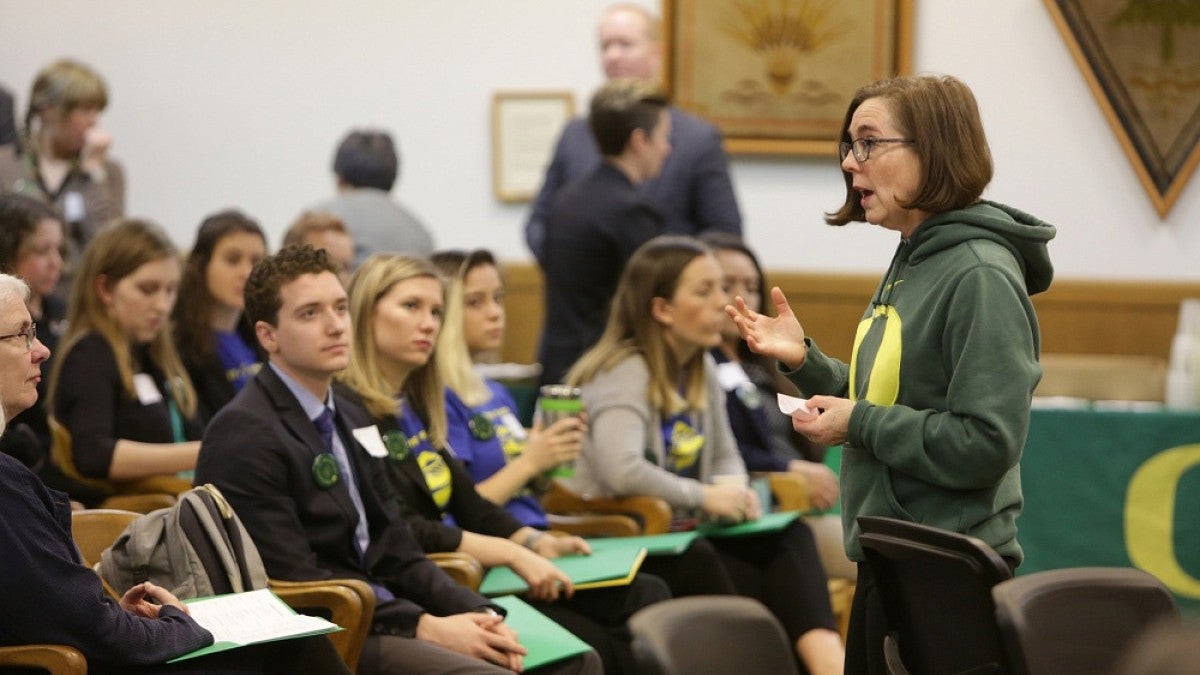With the Oregon Legislature in the last five weeks of the 2017 session, both the House and Senate chambers recently announced they would move to 24-hour notice for public hearings, an indication that the end of the session is near.
The UO is focused on advocating for an additional $100 million to help reduce tuition and protect critical student support services. It also seeks support for capital construction priorities, including general obligation bond requests for $44 million for a classroom and faculty office building and $100 million for the Knight Campus for Accelerating Scientific Impact.
The Knight Campus continues to garner more support from industry, business, labor and tribal leaders around the state, including a joint letter from the members of the Knight Campus coalition and a letter of support from more than 70 faculty from Oregon State University, Portland State University, Oregon Health & Science University and the UO.
The state budget picture continues to evolve. In January, lawmakers faced a more than $1.8 billion budget shortfall. That gap has been reduced slightly as recent revenue forecasts showed that while economic growth in Oregon has slowed, the state is set to collect more than projected.
Democrats and Republicans are working to close the budget gap, which will likely include a mix of cost containment measures and new revenue from increased taxes on hospitals and businesses. A bipartisan workgroup released a series of recommendations in April focused on short-term and long-term strategies that could bend the cost curve.
Legislative leaders also established a Joint Committee on Tax Reform, which is evaluating various new tax proposals, including the Oregon Education Investment Initiative. This proposal would raise more than $2 billion through a commercial activities tax.
While it remains unclear which, if any, plan will have the political support to pass this session, the Oregon Education Investment Initiative has tagged approximately $250 million of the new revenue for higher education.
In addition to the larger budget issues of session, the UO has seen some success in passing policy measures.
House Bill 2399 and Senate Bill 5 have passed both chambers unanimously and have been signed into law by Gov. Kate Brown. HB 2399 establishes the Condon Collection at the UO’s Museum of Natural and Cultural History as the Oregon State Museum of Paleontology and is now the official depository for any material of paleontological nature that may come into possession of the state.
SB 5 expands the definition of “athlete agent” to better protect student athletes from predatory agents who could provide incentives that create problems around eligibility.
The Oregon Senate passed Senate Resolution 2, chief sponsored by Sen. Bill Hansell, R-Pendleton, and Sen. Lee Beyer, D-Eugene, which honors the UO men’s basketball team for its appearance in the Final Four at the NCAA tournament. UO Athletic Director Rob Mullens and men’s head basketball coach Dana Altman came to the Capitol to attend the floor session on this resolution.
House Concurrent Resolution 37, a resolution honoring UO academic and athletic achievements over the last year, is moving its way through the legislative process.


